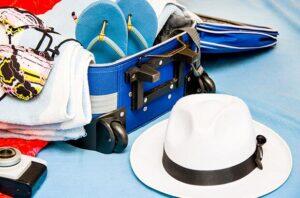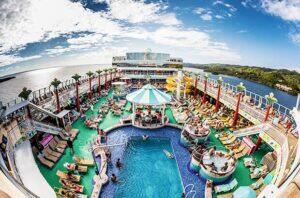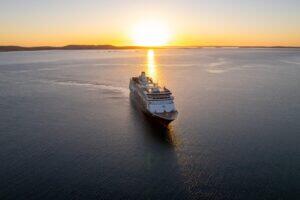Boarding the Cruise Ship

Hurray, the ship's within sight, and you're ready to board for the big trip!
Contents
But what exactly happens when you get to the port? Streamline your check-in process by knowing just what to expect.
Contents
The Check-in Process
Arriving at some cruise terminals can be overwhelming, and the crowds may at first seem chaotic. In most cases, cruise lines or port authorities provide sufficient staff to direct passengers to where they need to go, but sometimes you’ll encounter lines if arriving at a peak boarding time. Cruise line shoreside staff are almost always milling about to point you in the right direction, and they’re easily recognizable in official-looking uniforms with name tags and, often, a clipboard. Cruise lines prefer to stagger passenger boarding and have plans for that. Your cruise document should indicate a time for arrival. You should arrive at that time to keep waiting to a minimum.
Baggage handlers work for the port, not the cruise line. And they expect a tip of about $2 per bag.
Make sure you have secured your ship’s luggage tags to your locked bags before handing them over. You won’t see these bags again until you get to your cabin.
Next you’ll pass through airport-style security, but you usually don’t have to take off your belt or shoes.
During check-in, you’ll need the cruise documents you were sent (and which you probably completed online ahead of time) along with your proof of citizenship and credit card to cover onboard charges.
Most cruise lines take your picture as you check in.
You’re then issued a boarding card (or sometimes a bracelet) that usually also doubles as your stateroom key and shipboard charge card.
Make sure you are checked in for your cruise at least 90 minutes before departure; if you arrive late, you could be denied boarding because of U.S. government security regulations.
You may be issued a number or allowed to board immediately.
You’ll normally be asked to stop for a souvenir photograph before you board.
Boarding usually starts several hours before departure but almost always closes an hour before departure.
INSIDER TIPYour cruise document should indicate a time for arrival. You should arrive at that time to keep waiting to a minimum.























